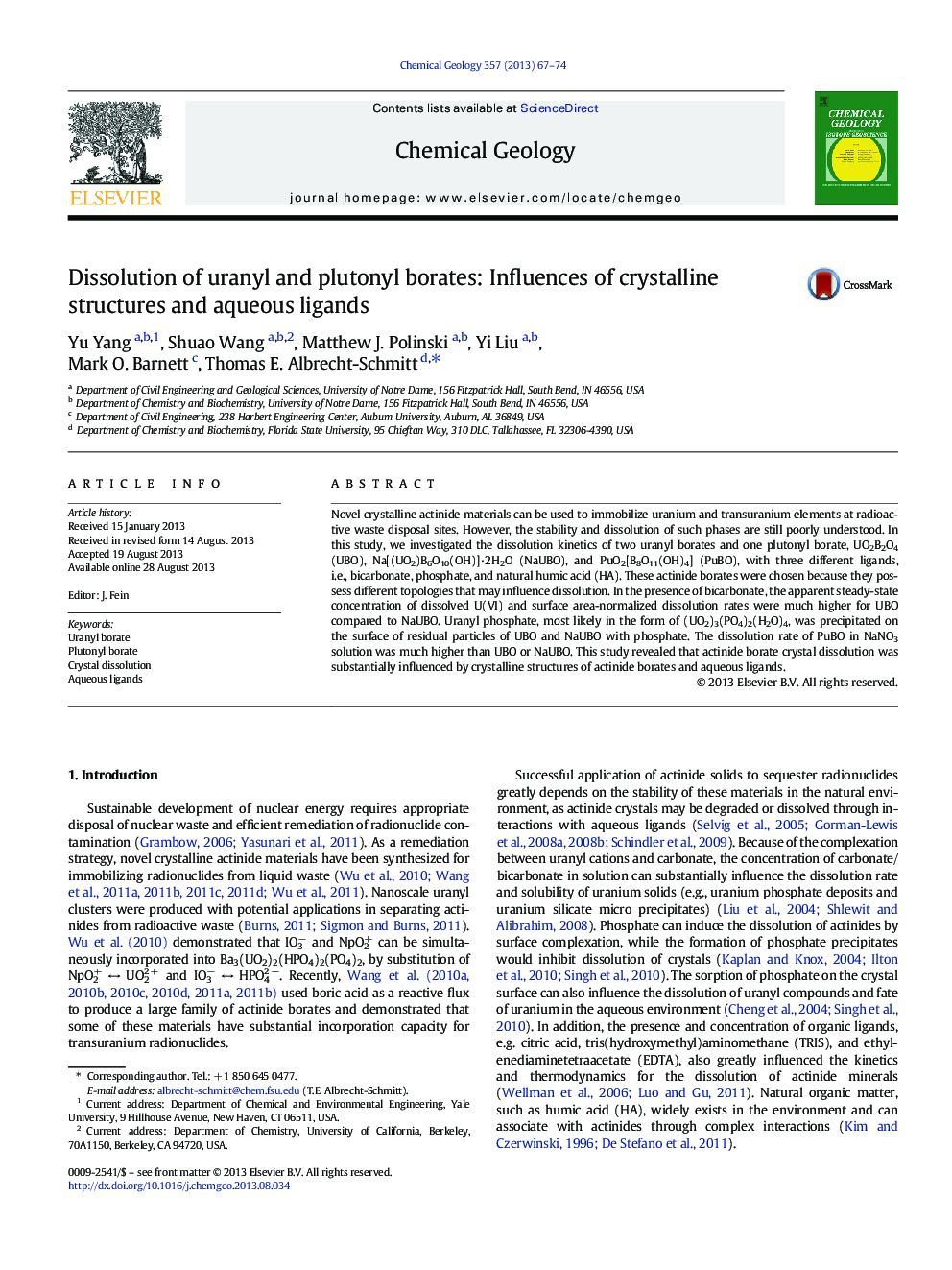| Article ID | Journal | Published Year | Pages | File Type |
|---|---|---|---|---|
| 6436862 | Chemical Geology | 2013 | 8 Pages |
â¢Dissolution of actinide borates strongly depends on the structure of the material.â¢Aqueous ligands greatly influence the dissolution of uranium and plutonium borates.â¢Dissolution of plutonyl borates differs from their uranyl borate surrogates.
Novel crystalline actinide materials can be used to immobilize uranium and transuranium elements at radioactive waste disposal sites. However, the stability and dissolution of such phases are still poorly understood. In this study, we investigated the dissolution kinetics of two uranyl borates and one plutonyl borate, UO2B2O4 (UBO), Na[(UO2)B6O10(OH)]·2H2O (NaUBO), and PuO2[B8O11(OH)4] (PuBO), with three different ligands, i.e., bicarbonate, phosphate, and natural humic acid (HA). These actinide borates were chosen because they possess different topologies that may influence dissolution. In the presence of bicarbonate, the apparent steady-state concentration of dissolved U(VI) and surface area-normalized dissolution rates were much higher for UBO compared to NaUBO. Uranyl phosphate, most likely in the form of (UO2)3(PO4)2(H2O)4, was precipitated on the surface of residual particles of UBO and NaUBO with phosphate. The dissolution rate of PuBO in NaNO3 solution was much higher than UBO or NaUBO. This study revealed that actinide borate crystal dissolution was substantially influenced by crystalline structures of actinide borates and aqueous ligands.
